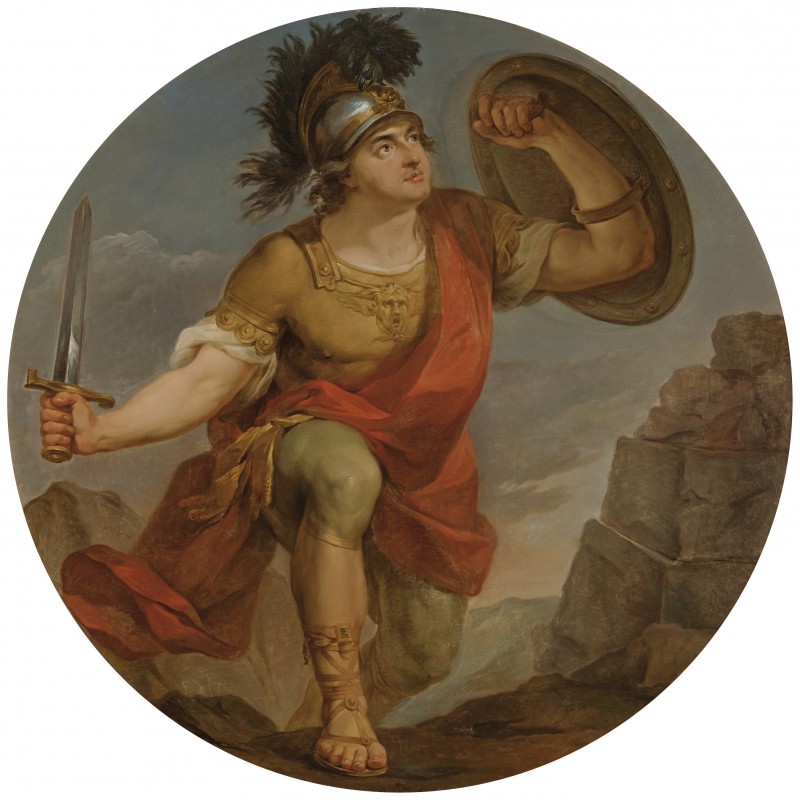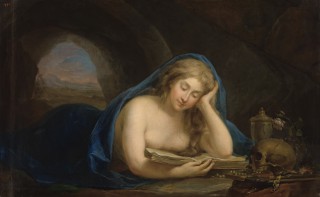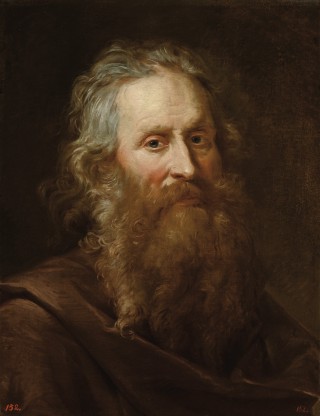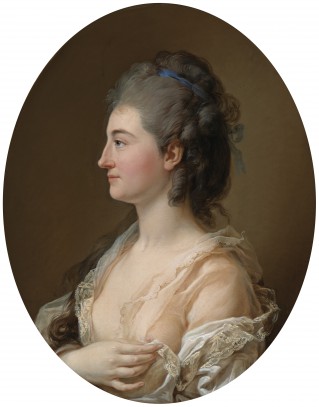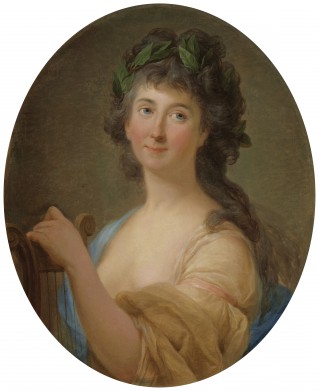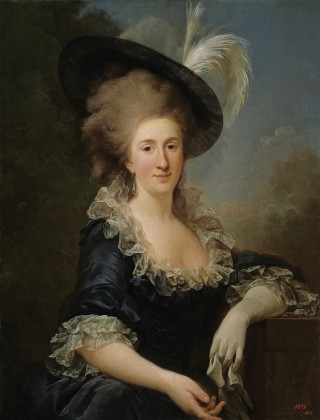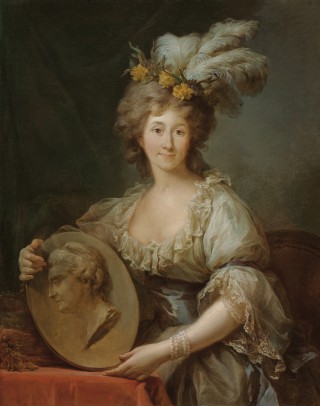Courage
- Date
- before 1793
- Object type
- painting
- Technique
- oil
- Material
- canvas
- Dimensions
- 157,1 x 154,2 cm
- Acquisition date
- 1793
- Location
- The Palace on the Isle - Salle de Salomon, ground floor
- Place of Origin
- Warsaw (Poland, Mazowieckie)
- Owner
- The Royal Łazienki
- Museum number
- ŁKr 127
The allegorical figure depicted by Bacciarelli, interpreted as Courage, Strength or Boldness, is modelled on a description in Ripa’s Iconology entitled Ardire ultimo e necessario (which can be translated as ‘ultimate and necessary bravery’). As in the case of the three other tondi [See Justice, Prudence, Mercy], Bacciarelli only took basic elements from Ripa’s descriptions—a man in armour, with a sword in his right hand and shield in his left.
Zygmunt Batowski discerned similarities to Stanislaw August in the personification’s features, whereas Alina Chyczewska—to his nephew, Prince Józef Poniatowski … . Marek Kwiatkowski and Agnieszka Skrodzka sustained Batowski’s opinion … .
There is indeed a resemblance in some of the details to the famous portrait of Stanisław August with Hourglass painted by Bacciarelli at the same time, dated 1793 (known from two autograph versions: one in the National Museum in Warsaw, inv. no. MP 312 MNW, and one in a private collection in Paris. The position of the head with large, uplifted eyes is identical in both paintings, whereas the shape of the nose and mouth of the personification of Courage differ significantly. Perhaps, like the other paintings in the series, the artist made use of only some of the physical traits of a given person—in this case of Stanisław August.
The warrior in Bacciarelli’s painting wears a cuirass decorated with Medusa’s head on the breastplate. Medusa’s head also appears on the floor of the Łazienki’s Rotunda … . Perhaps the warrior alludes to Perseus, who slayed the monster when he climbed the rock to save Andromeda … . [See D. Juszczak, H. Małachowicz, The Stanisław August Collection of Paintings at the Royal Łazienki. Catalogue, Royal Łazienki Museum, Warsaw 2016, no. 14, pp. 85–87.]
